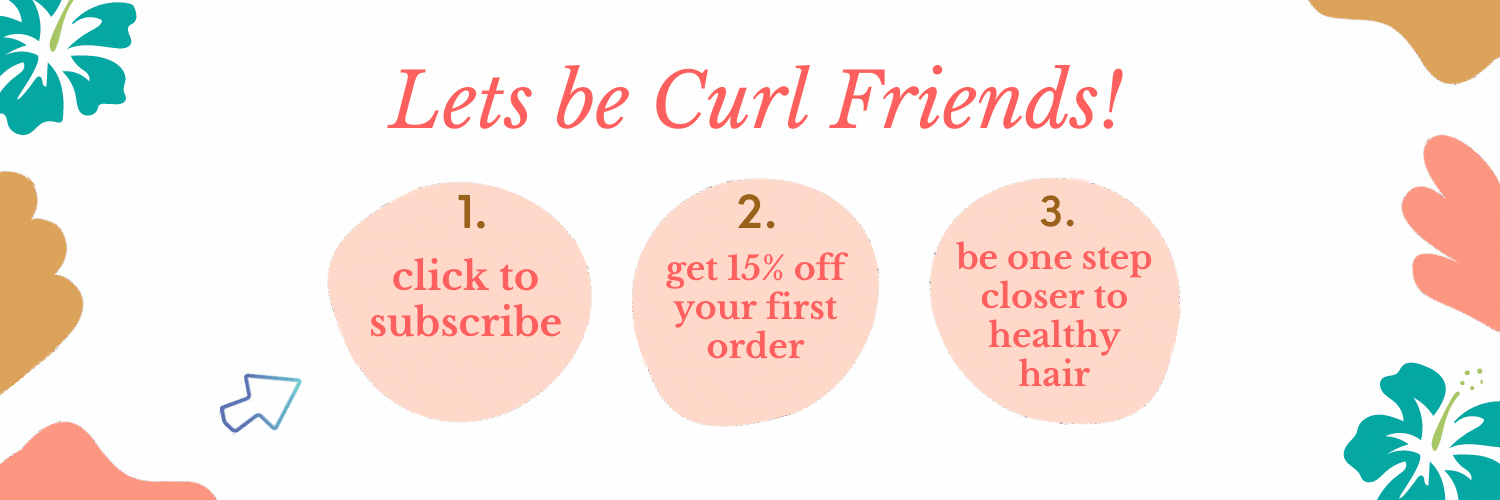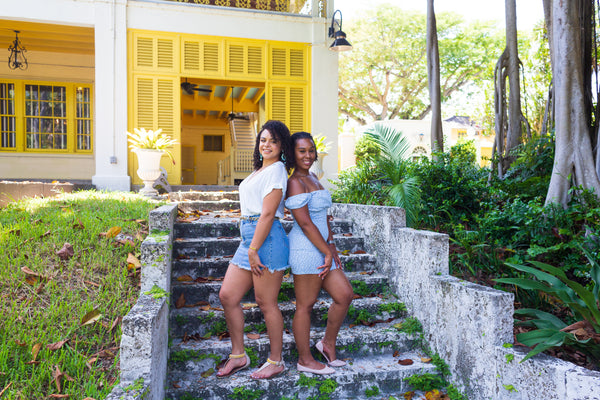Your Cart is Empty
free shipping on orders $100+ (u.s only)
free shipping on orders $100+ (u.s only)
November 12, 2018 7 min read
Originally published on February 13, 2018
A lot of people are scared to “big chop” for fear of having really short hair and trust me I was the same! This is why I chose to transition instead. It takes some time; but trust me, your natural hair has more potential then you give it credit for. Below are 10 steps I took throughout my journey.
I stopped using heat. I can’t stress how important this is - just look at those pictures (above). Although I stopped chemically straightening my hair in 2013, I continued to blow dry and flat iron my hair very often until May of 2015. That is when my “transition” actually began because prior to that my hair was still fried. Literally. I had so much heat damage. Often times we think that transitioning is just leaving relaxers behind but heat damage is a real thing sis. If you want to continue to straighten your hair you most definitely can! You just aren’t allowed to complain about wack curls. The hair on your head is yours and you can do as you please.
I maintained a co-wash and shampoo balance. I would wash my hair twice a week. Mid-week I would co-wash and on weekends I cleansed with a sulfate free shampoo. Once a month I would clarify with a sulfate shampoo. I was not full “curly girl” method at all and that’s why I needed to clarify to that extreme. A lot of the products I was using had silicones and parabens - you need a sulfate to remove those from your hair shaft. If you want to learn about the CG method you can read more about it here. Amber has a great series on her blog and she also has some videos. I would say I’m mostly CG friendly now but this is about what I did while transitioning. I did use some ‘Shea Moisture’ and ‘As I Am’ , but I was also still using brands like Suave, Tresemme, and Garnier. I don't think it’s necessary to wash twice a week you can do once a week and alternate the cowashing and shampoo that way it’s totally up to you. At this point, my hair was very dry and I found thos worked best. A co-wash is a conditioning cleanser. Shampoo, although very necessary, can be drying. Co-washing is a great way to cleanse your hair without stripping it. It can remove things like sweat from your workout and it allows you to restyle your hair. Some naturals co-wash more often than others and some don’t cowash at all. You can use a product that is labeled to be a co-wash or just conditioner. I like actual co-washes - when I use conditioner I don’t feel like I washed my hair.
I got serious about deep conditioning. Every single week I would deep condition at least once. Usually on the weekends but if I could get one in mid-week I did. I rotated moisturizing treatments and protein treatments every week. I also used DIY's and I still do till this day. I know I used mostly Shea Moisture, they have about 1 million lines and most lines have deep treatments. I also used to use the Palmer’s packs a lot, they are $1-2 at Target and Walmart. Eden Body Works has great affordable deep conditioners as well.
I learned a great way to apply products to my hair and seal in moisturize. Wth is loco coco? L = Liquid or leave-in,C = cream or styler like a hair gel or jelly,O = oil.I experimented with both applications, LOC and LCO, until I found which one works best for me. Results: I use either or depending on the products and the style.
I started using oils on my hair. I learned what a “pre-poo” was and I was pretty much hooked. I started off oiling my hair with coconut oil before shampooing but soon after I started mixing a bunch of them together as I was inspired by a lot of pins I had saved for hair growth. I would also boost my deep conditioners with these same oil cocktails. I started sealing my hair with oil either in a LCO or LOC. Thisoil works great for all hair types and can be used any way you'd like.
I began to wear a bonnet at night and a shower cap in the shower. I got a bonnet from Walmart that was not real satin and it held me down for a good year. Now I have a real one from https://www.etsy.com/shop/SewCrowned. My shower caps are from Walmart as well. Almost immediately I noticed a huge difference in the frizz I was dealing with.
I started protective styling frequently. I would mostly wear my hair in a bun with two twists/cornrows in the front or I would have my mother do 2 french braids for me. I got box braids a few times and I also started experimenting with braid outs. To this day braid outs are still my favorite style because they allow me to have some texture but they also give me length and volume. Braid outs are good for transitioning hair because they can blend your curl pattern growing in at the roots with that damaged hair you’re desperately holding on to. (No shame okay we all have been there...)
I cut my hair - A LOT. It took me some time lol but the truth is, that hair isn’t going to magically revert, you need to cut it. 2015-2016 my hair looks the same length because as my roots grew in I would trim the ends. My hair was really damaged; not just from chemical straighteners and heat but also from color. Between 2014 and 2016 I dyed my hair 4 times and I bleached it for highlights. In October of 2016 my mother cut off a good 5 inches and that took care of all my heat damage. Then I went on to dye it jet black early in 2017 (I have challenged myself to stop and grow out my natural color - so far so good).
I followed natural hair bloggers on YouTube and on Instagram for tips and more than anything motivation. I loved seeing their transformation pictures it really gave me hope and made me realize that if I just stuck to the plan eventually my curls would be healthy and really pop. Note that I said for “motivation,” this leads well into step 10.
I resisted the urge to become a product junkie. I knew that I was transitioning and that this wasn’t my final curl pattern. Why would I spend all this money on fancy products if my hair is still trying to get there? I know a lot of bloggers will tell you otherwise. They will tell you that you need to go full Curly Girl Method… they will tell you to only use Deva Curl… they will tell you that you need every single product they use to get their results… Sure that may work for some and you can try whatever you like. In my experience it’s not necessary to go product crazy (yet lol). Minus my deep conditioners and maybe a curling cream or two I used a few regular ass cheap ass products for most of my transition and my hair transitioned back just fine. Keep in mind I also did everything previously mentioned in this post. My advice – save it for when you’re fully natural and you can see your curl pattern for what it is, then, of course, treat yourself. We’re all product junkies on this side and being natural is a lot about experimenting.
PS: If you are transitioning from a relaxer you're going to need to beeven more patient. Relaxers cause a lot of damage to your scalp and for some time (varies from head to head) your hair will most likely grow out damaged. It's going to feel brittle and seem like it has some sort of coating on it making it dry and difficult to work with. Rest assured things will most definitely improve if you focus on the overall health of your hair and scalp and you stay consistent in your hair care regimen.



Hey Curly! Join our email list and get 15% off your first order. You'll also be the first to receive exclusive news, healthy hair tips, promotions and more.